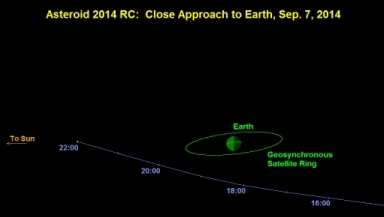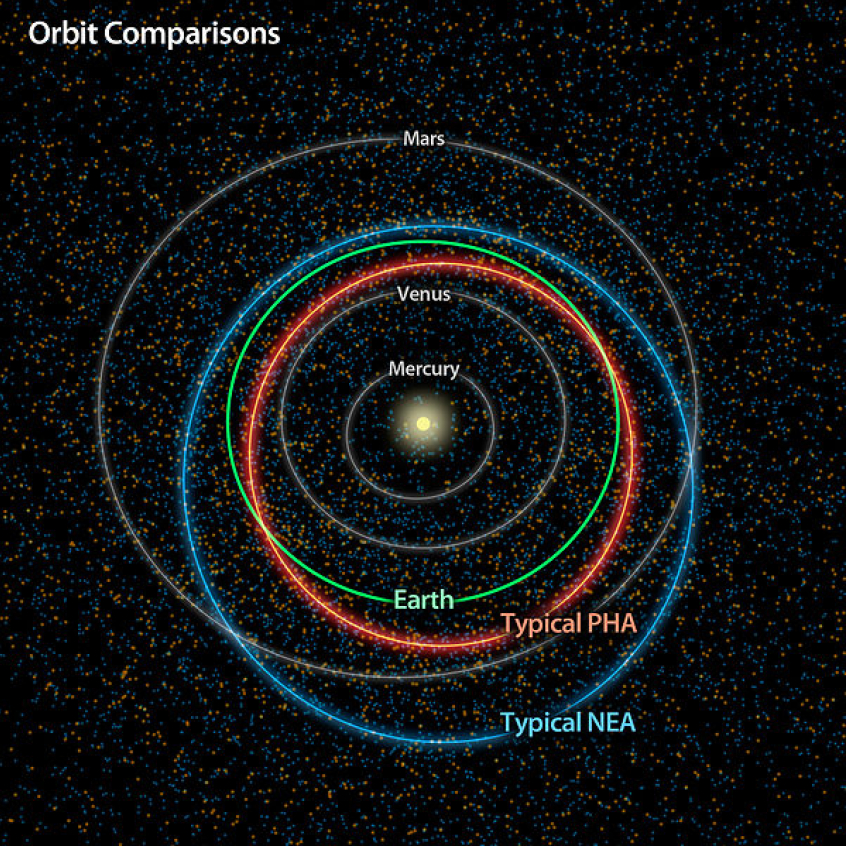
An asteroid, measuring about 12 to 26 meters in diameter, will be passing close to Earth on Sunday, Sept. 7, at a CA (close approach) distance of 40- to 45,000 km or 0.0003 AU (astronomical units). Called 2014 RC, the space rock will be speeding at 10.95 kilometers per second.
Although 2014 RC will be skimming very close to the planet, NASA says there will be no impact.
Also, while this is the closest approach of a Near-Earth Object (NEO) this month, it's not the only space rock to zoom by. Five NEOs approached the planet at varying distances on Sept. 5; and 31 more are expected to be in the neighborhood from Sept. 8 to 30. Universe Today says that there are 10,619 known NEAs (Near-Earth Asteroids) as of Feb. 2014.
2014 RC will have a close approach with Earth again in Sept. 2017 and 2020, but it will be at a greater distance than this year's.
Near-Earth Objects (NEOs), as NASA defines the term, "are comets and asteroids that have been nudged by the gravitational attraction of nearby planets into orbits that allow them to enter the Earth's neighborhood."
Not all NEOs, or more specifically NEAs, are considered a threat or are classified as a Potentially Hazardous Asteroid (PHA). NASA says, "...asteroids that can't get any closer to the Earth (i.e. MOID) than 0.05 AU (roughly 7,480,000 km or 4,650,000 mi) or are smaller than about 150 m (500 ft) in diameter (i.e. H = 22.0 with assumed albedo of 13%) are not considered PHAs."














